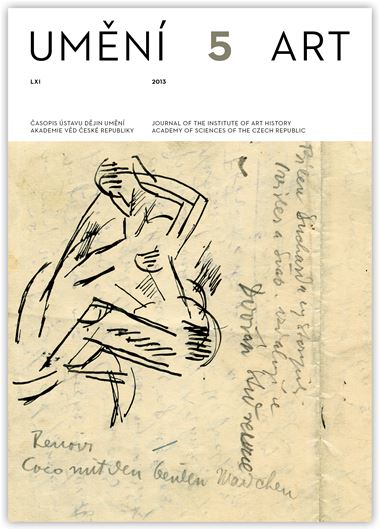Jiří Sobek
Bakchus, nebo vinař? Ikonografie iniciály s polonahým mužem v Mater verborum
This essay explores the iconography of the initial ‘Y’ on folio 191r in the well-known etymological dictionary Mater verborum, also called Glossa Salomonis, housed in the Library of the National Museum in Prague (X A 11). The dictionary originated around the year 1240 or later. On the left prong of the letter Y in the illumination is a monkey eating a piece of fruit, and on the opposite prong to the right a semi-nude young man with a joyful expression on his face as he gathers grapes from the vine. Since the early nineteenth century, researchers have attributed various symbolic meanings to this scene. An opinion that surfaced in the 1980s is that the figure, given his nudity and Classical appearance, represents Bacchus and the monkey the satyr often found in his company. This hypothesis is further supported by brief mentions of Bacchus on folio 15v and of the satyr on folio 153v. However, most researchers were unreceptive to this view. Currently, two theories prevail. The first identifies the male figure as a vintner portrayed in the act of harvesting his grapes, and the second as the symbolic depiction of a man in bliss upon attaining Salvation and entering Paradise. The animal figure represents the devil. The author of this essay analysed the text that accompanies this illumination in comparison to an excerpt from an earlier, Classical text that is traditionally attributed to Pythagoras of Samos from the sixth century BCE. That text is a parable in which ‘Y represents the crossroads in an individual’s life, when he or she must make a choice between two roads to follow. The road of virtue is steeper and more difficult, but it leads to beatitude. The road of vice and sin is appreciably easier and more enjoyable, but it is the road to perdition and hell. Isidore of Seville included this parable in Etymologiae, the first book he wrote on this subject, and from there it was transcribed into the dictionary, either directly or via another, earlier transcription of Glossa Salomonis. The fact that Isidore’s name is written directly above the initial, as a clear guideline for any future readers, also points to Isidore’s book as the source of this text, which corresponds perfectly with the image in question and clearly indicates that the scene depicts neither Bacchus nor a vintner harvesting grapes but a blissful man who has just entered Paradise.
Full-text in the Digital Library of the Czech Academy of Sciences:
https://kramerius.lib.cas.cz/uuid/uuid:59d3e996-98c7-48a3-90a8-5e90559c3b1a
< back

